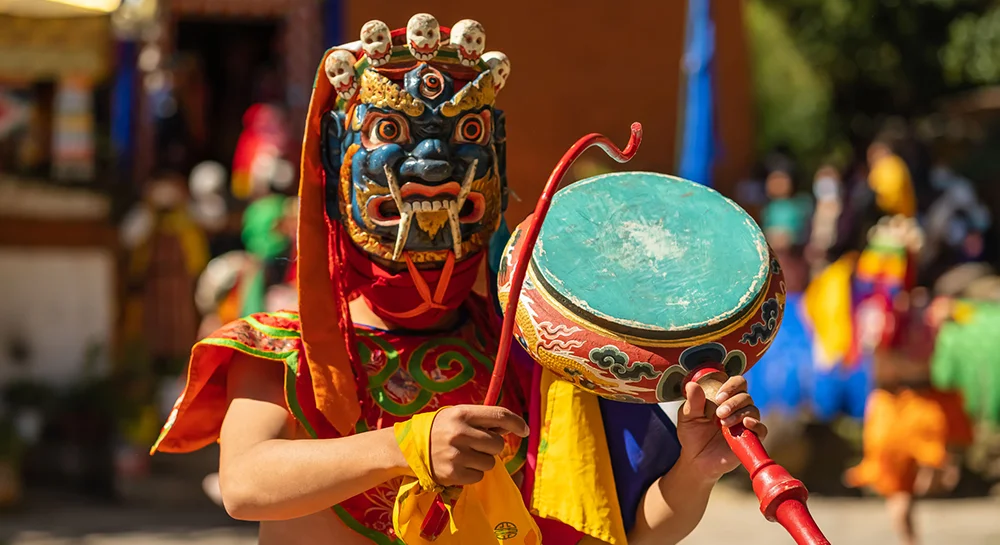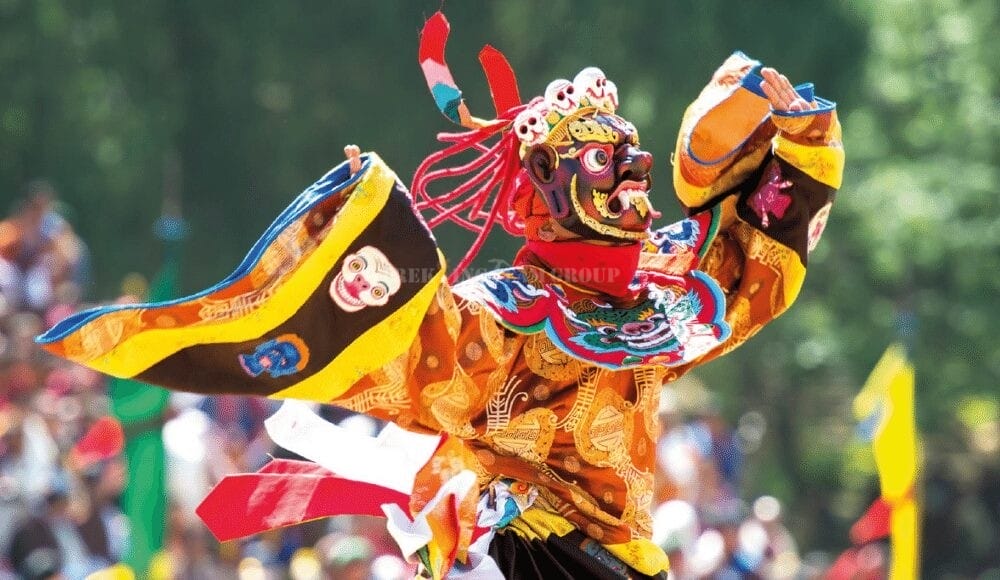The Thimphu Festival, also known as Thimphu Tshechu, is one of Bhutan’s most significant religious and cultural celebrations. Tshechus are annual religious festivals in Bhutan that are celebrated in various towns and monasteries across the country. The Thimphu Tshechu is particularly renowned because it takes place in the capital city, Thimphu, and is one of the largest and most elaborate of all Bhutanese festivals.
Here are some key aspects of the Thimphu Festival:
- Religious Significance: The festival is held to honor Guru Rinpoche (Padmasambhava), the saint who introduced Buddhism to Bhutan in the 8th century. It is also a time to pay tribute to the great 17th-century saint, Lama Drukpa Kunley.
- Date: The Thimphu Festival usually takes place in September or October, depending on the lunar calendar. It typically lasts for several days, with the main events occurring on the last two days.
- Masked Dances: The highlight of the Thimphu Tshechu is the series of mask dances performed by monks and laypeople. These dances are colorful and dramatic, and they depict various Buddhist stories, legends, and moral tales. Some of the dances are believed to have the power to purify the souls of the onlookers.
- Traditional Attire: Bhutanese people, both locals and visitors, often dress in their finest traditional attire (known as “kira” for women and “gho” for men) during the festival. This adds to the festive and cultural atmosphere.
- Throng of Spectators: The Thimphu Festival draws a large crowd of spectators from all over Bhutan and even tourists from around the world. It’s a great opportunity for visitors to experience Bhutanese culture and religious traditions.
- Blessings and Socializing: In addition to the religious aspects, the festival is a time for people to receive blessings from the monks, socialize with family and friends, and enjoy local food and entertainment.
- Traditional Crafts Fair: Alongside the religious ceremonies and dances, there is often a traditional crafts fair held during the Thimphu Tshechu. This provides an opportunity for local artisans to showcase and sell their handcrafted goods.
- Throngdrup and Guru Throngdrup: On the last day of the festival, there is a display of a large silk Thongdrel (religious scroll) called “Throngdrup” or “Guru Throngdrup.” This is a significant event, and it is believed that merely viewing the Thongdrel can cleanse one’s sins.
The Thimphu Festival is not only a religious event but also a vibrant cultural celebration that reflects the unique traditions and heritage of Bhutan. It offers visitors a glimpse into the rich Bhutanese culture, its deep-rooted religious practices, and the warmth of its people. If you plan to attend the Thimphu Tshechu, it’s advisable to check the exact dates in advance, as they can vary from year to year based on the Bhutanese lunar calendar










